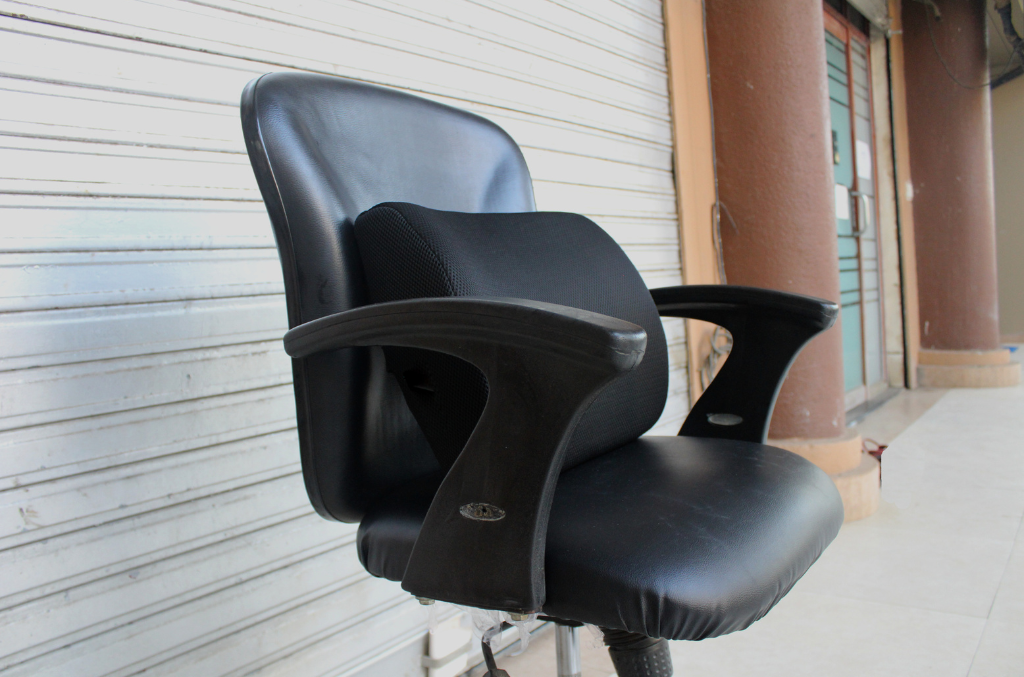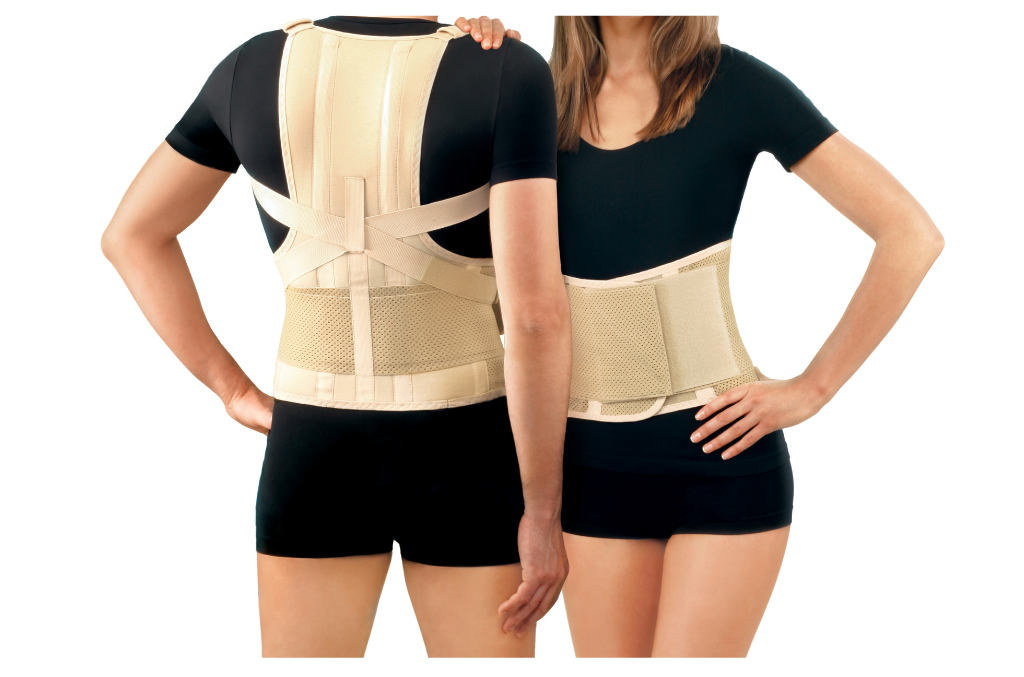Ergonomic Back Supports
An Expert Guide to Ergonomic Back Supports: Improve Posture, Prevent Injury
In our daily routines, posture is more pivotal than we ever realize. From sitting at the office desk to lifting heavy materials in a warehouse, maintaining an optimal posture is the key to staying healthy and productive. Among the many aids available to help us maintain good posture, Ergonomic Back Supports stand out as a game-changing invention.
Designed to provide sufficient support to the back and ensure correct spinal alignment, these ergonomic marvels help reduce the risk of developing chronic back problems. Whether you’re an office worker hunched over a computer or a healthcare professional providing patient care, ergonomic back supports can make a significant difference in your day-to-day activities.
And it’s not just about preventing back pain. Proper posture is linked with better breathing, improved concentration, and overall well-being.
In This Article
Understanding Different Types of Ergonomic Back Supports

Just as every back is unique, so are the Ergonomic Back Supports designed to support them. There’s no one-size-fits-all model. Instead, many designs are tailored to meet specific needs and preferences.
Lumbar Supports: These supports are designed to fill the natural gap between the lower back and the chair, promoting a healthy, neutral posture. They’re ideal for those who sit for long periods.
Full Back Rests: Offering support to the entire back is perfect for individuals with upper and lower back concerns. They align the spine and distribute the body weight evenly across the chair.
Seat Cushions: Not strictly a back support, but these can indirectly affect your posture. They reduce pressure on the spine and promote better seating posture.
Belt Supports: These are worn like a belt around the waist. They provide back and abdominal support, making them great for those involved in heavy lifting.
Choosing the right ergonomic back support depends on your lifestyle, the nature of your job, and the amount of time you spend sitting or lifting. It might take a bit of trial and error, but the payoff in comfort and long-term health will be well worth it.
The Science Behind Ergonomic Back Supports
We’ve all heard the phrase “sit up straight”, but have you ever wondered why? The answer lies in the complex structure of our backs, consisting of a network of muscles, ligaments, and bones. Sitting, standing, or lifting incorrectly can put undue stress on these components, leading to discomfort and potential injury.
Ergonomic Back Supports promote a healthier posture and reduce the pressure on our spine. They encourage the natural curvature of our spine, helping align the head, neck, and shoulders and distributing body weight evenly.
Research shows that poor posture can contribute to various problems, including back pain, decreased lung capacity, poor circulation, and even digestive issues. By using ergonomic back supports, we can mitigate these risks.
Here’s the lowdown on how they work:
Spine Alignment: Back supports help maintain the spine’s natural ‘S’ shape, reducing strain on the discs and preventing long-term damage.
Pressure Distribution: By promoting a correct sitting position, these supports distribute our body weight evenly across the seat and back, reducing pressure points.
Muscle Fatigue Reduction: When we slouch, our muscles work harder to keep us upright. Back supports take some of this load, reducing muscle fatigue.
Industry Applications of Ergonomic Back Supports

Ergonomic Back Supports find critical applications in various industries, from bustling factories to quiet office spaces. Their main goal remains to enhance comfort, improve efficiency, and prevent back injuries.
Let’s explore some of these applications:
Manufacturing and Distribution: Workers are often required to lift heavy objects, putting them at risk of back injuries. Back supports like belt supports can help maintain correct posture during lifting, reducing this risk.
Healthcare: Nurses and caregivers spend long hours on their feet, often in awkward positions. Full backrests can provide the comfort they need to stay productive and avoid back problems.
Education: Teachers often stand for extended periods, putting strain on their backs. Using ergonomic supports can help maintain correct standing posture, reducing fatigue and discomfort.
Building Services: Workers in this industry often perform physically demanding tasks in challenging positions. Here, robust back supports can provide the necessary support, reducing the risk of injury.
Regardless of the industry, maintaining optimal posture and preventing back injuries is paramount. And that’s where ergonomic back supports come in, stepping up as a trusted ally in promoting back health and comfort.
Tips for Choosing the Right Ergonomic Back Supports
Selecting an Ergonomic Back Support isn’t a decision to take lightly – your comfort and health depend on it. But with so many options out there, how can you make the right choice?
Here are some factors to consider:
Identify Your Need: Think about your daily activities. Do you sit at a desk for long hours or constantly lift heavy items? The type of back support you need will depend on your lifestyle and work.
Consider Quality and Durability: Look for back supports made from high-quality, durable materials. While these may cost more upfront, they’ll withstand daily wear and tear and provide better support.
Fit is Crucial: The right fit is essential for back support to be effective. Whether it’s a lumbar support or a full backrest, ensure it properly fits your body and chair.
Seek Professional Advice: If you’re unsure, don’t hesitate to seek advice from a healthcare professional. They can offer insights based on your specific needs and health condition.
Proper Usage and Maintenance of Ergonomic Back Supports

Once you’ve selected the ideal Ergonomic Back Support, it’s crucial to use it correctly and take care of it. Even the best back support can’t do much if it’s not used or maintained properly.
Here’s some advice to keep in mind:
Usage: Ensure the back support is positioned correctly. It should fit snugly against your back and align with the natural curve of your spine.
Adjustment: Take the time to adjust your chair and back support. Your feet should be flat on the floor, and your knees at a 90-degree angle.
Breaks: Remember, back supports are not a substitute for movement. Take regular breaks to stand and stretch.
Cleaning: Follow the manufacturer’s cleaning instructions to keep the back support in good condition. Regular cleaning can extend its lifespan and ensure it provides effective support.
Remember, back support is an investment in your health and comfort. By choosing the right one and taking care of it, you can reap the benefits for years to come.
Regulatory Aspects of Ergonomic Back Supports
Regarding your health and safety, knowing the regulatory standards governing Ergonomic Back Supports is essential. Compliance with these regulations ensures the product’s safety and effectiveness.
Key regulations to consider include:
Safety Standards: Check if the product meets the safety standards set by recognized bodies like the American National Standards Institute (ANSI) and European Committee for Standardization (EN).
Medical Device Regulations: If the back support is marketed as a medical device, it must comply with the regulations set by agencies like the Food and Drug Administration (FDA) or the European Medicines Agency (EMA).
Quality Certifications: Look for quality certifications like ISO 13485, which guarantees that the manufacturer has met international standards for quality management in the production of medical devices.
Always remember a compliant product is a safer product. Never compromise on regulatory compliance when purchasing ergonomic back supports.
Different Brands of Ergonomic Back Supports
When it comes to choosing an Ergonomic Back Support, brand reputation matters. Investing in a product from a respected brand can give you confidence in its quality and effectiveness.
Here’s a quick rundown of some leading brands in the ergonomic back support market:
Herman Miller: Known for their high-quality ergonomic chairs, they also offer excellent back supports designed for their chairs.
Fellowes: They offer a range of ergonomic solutions, including back supports, footrests, and wrist supports.
Mueller: This brand is well-respected for its back and lumbar support, especially popular among athletes and those who lead an active lifestyle.
Tempur-Pedic: Famous for their mattresses, they also produce ergonomic cushions and back supports using their proprietary TEMPUR material.
When choosing a brand, consider its reputation, customer reviews, and the quality of its customer service.
Ergonomic Back Supports are more than just a comfort accessory. They’re a potent tool in preventing back injuries and promoting better posture. Whether you’re part of the healthcare industry, manufacturing, education, or building services, these supports can make a tangible difference in your daily routine.
The key lies in choosing the right back support for your needs, using it correctly, and maintaining it well. And, of course, never underestimate the importance of good posture in your overall well-being.
As we look ahead, the future of ergonomic back supports is promising. With advancements in technology and design, we can expect these supports to become even more effective and tailored to individual needs. So, here’s to a future with less back pain and more comfort!
Frequently Asked Questions (FAQ)
At IP Products, we offer a wide range of Ergonomic Back Supports to meet your needs. Browse our collection today and find the perfect Ergonomic Back Supports for your job. We are dedicated to quality, customer satisfaction, and fast shipping.

